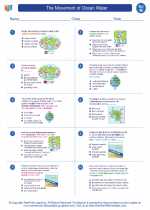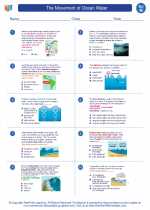Mammals
Mammals are a group of vertebrate animals characterized by the presence of mammary glands which produce milk for feeding their young. They are also distinguished by the presence of hair or fur on their bodies. Mammals have a wide range of adaptations that allow them to thrive in various environments, from the air to the sea to the land.
Characteristics of Mammals
1. Mammary Glands: Mammals have mammary glands that produce milk to nourish their young.
2. Hair or Fur: Mammals have hair or fur that provides insulation and protection.
3. Warm-Blooded: Mammals regulate their body temperature internally and are described as warm-blooded.
4. Specialized Teeth: Mammals have a variety of specialized teeth for different feeding habits (e.g., carnivores, herbivores, omnivores).
5. Diaphragm: Mammals have a diaphragm, a muscle that aids in breathing.
Classification of Mammals
Mammals are classified into different groups based on their characteristics and evolutionary relationships. The main groups of mammals are:
1. Monotremes: Egg-laying mammals, such as the platypus and echidna.
2. Marsupials: Mammals that give birth to relatively undeveloped young, which then continue to develop in a pouch, for example, kangaroos and koalas.
3. Placental Mammals: Most mammals belong to this group, where the young develop inside the mother's uterus, nourished by a placenta, for example, humans, dogs, and whales.
Adaptations of Mammals
Mammals have evolved a variety of adaptations to survive and thrive in their environments:
1. Body coverings: Different types of fur, hair, or specialized skin for insulation or camouflage.
2. Limb structure: Adaptations for running, climbing, digging, swimming, or flying.
3. Sensory adaptations: Enhanced senses of smell, hearing, and vision for locating food and avoiding predators.
4. Teeth and jaw adaptations: Specialized teeth and jaws for different feeding habits.
Ecological Importance of Mammals
Mammals play crucial roles in ecosystems as herbivores, carnivores, seed dispersers, and pollinators. They also contribute to nutrient cycling and help regulate populations of other organisms.
Understanding the characteristics and adaptations of mammals is essential for comprehending their ecological roles and the importance of conservation efforts to protect these diverse and fascinating creatures.
.◂Science Worksheets and Study Guides Eighth Grade. The Movement of Ocean Water

 Worksheet/Answer key
Worksheet/Answer key
 Worksheet/Answer key
Worksheet/Answer key
 Worksheet/Answer key
Worksheet/Answer key
 Vocabulary/Answer key
Vocabulary/Answer key
 Vocabulary/Answer key
Vocabulary/Answer key
